In the first few weeks of January, the Nasdaq fell 10% below its 52-week high. Meanwhile, the S&P 500 slipped about 4% from its record peak.
The reason for the volatile start to the New Year? Fear of the Federal Reserve raising overnight lending rates rapidly to combat inflation.
Bear in mind, over the course of the last 13 years, financial markets developed an addiction to ultra-low interest rates. Reversing course by the Fed now could make it more difficult for investors to justify the risks that they’ve been taking in stocks, bonds, cryptocurrencies, and collectibles.
Additionally, higher borrowing costs tend to limit the expansion of growth-oriented companies. “Disruptor” stocks that have yet to achieve profitability have shown the most strain.
Perhaps ironically, traders began anticipating the move away from the riskiest “disruptors” last year. And the downside moves in 2021 were brutal.
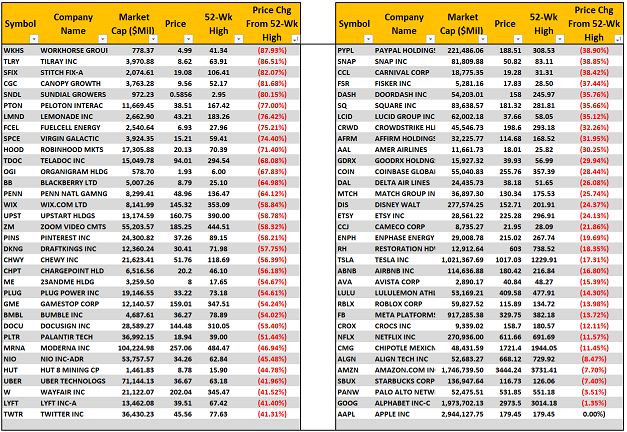
In truth, today’s “disruptors” represent the same “dot-com” stock space from 20-plus years ago. Back in the late 1990s, non-profitable tech hopefuls rocketed on easy money. They crashed down to earth in the tech wreck of the early 2000s.
If we compare yesterday’s dot-com darlings with today’s disruptor dreamboats, the ride up and the ride down look eerily similar.
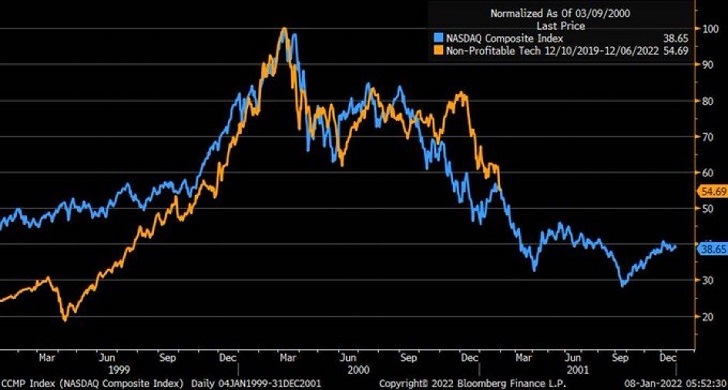
Some of these fantastical growth stories have become worth a leg and arm. Even after the recent smackdown. In a similar vein, there are quite a few companies that no longer have an stories to tell; their products or services do not generate much in the way of revenue or profits.
It follows that a desperate-for-return investment community has been betting on some of the junkiest ideas around. At this point, the collective value of marginal corporations — “zombies” that can barely afford the interest on their debts — has skyrocketed.
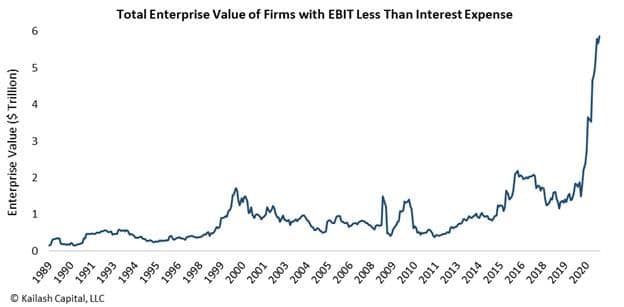
The real damage underneath the surface is becoming easier to spot. For example, the Nasdaq itself may only be 10% or so below a record peak. Yet its constituents? Only one-third of them are even experiencing a stock uptrend.
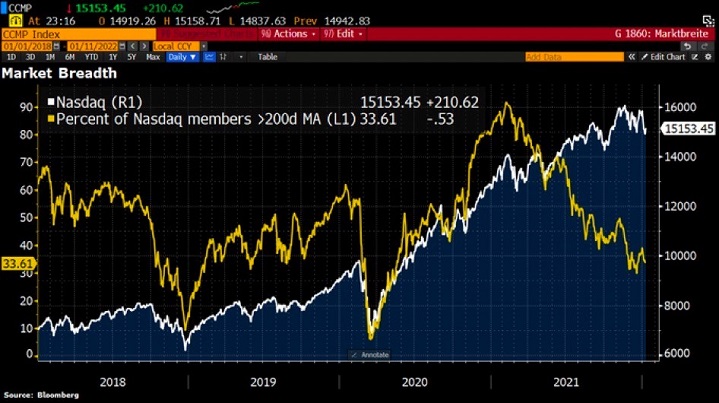
Moreover, it is rare to see so many big-time stock names on the Nasdaq logging -50% in losses. Or worse. But that is precisely what is transpiring.
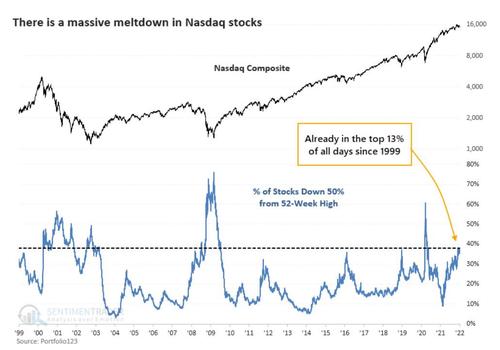
What is an investor to do? One may need to think more in terms of “value” stocks than “growth” stocks. International equities more than U.S. equities alone.
Granted, the year is still young. Nevertheless, with the Fed raising rates to battle the higher cost of living, the economy is likely to slow.
These types of environments often require modest shifts. And the stock types with the best valuations relative to U.S. large-cap growth? U.S value stocks and international stocks.
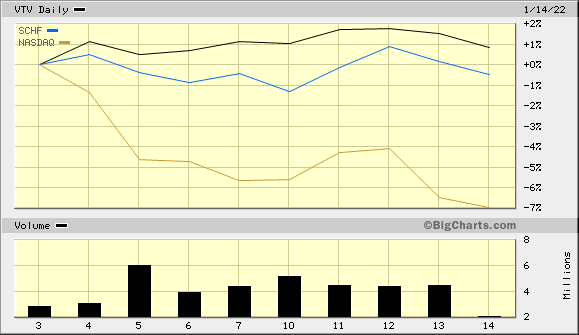
Would you like to receive our weekly newsletter on the stock bubble? Click here.
